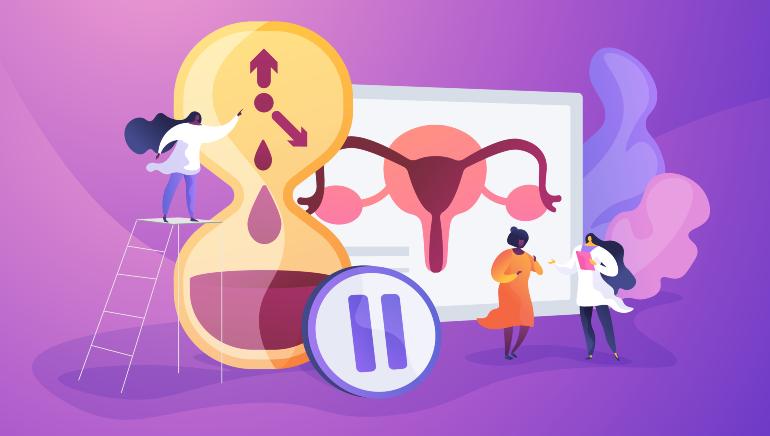What would be the condition of a girl at the age of 13-15 if they didn’t know that hair growth on certain parts of the body, development of mammary glands and the beginning of menstruation are normal phenomena associated with entering into another period of life – puberty? They would be at least puzzled, but rather scared and disoriented. And this is exactly what happens with the period of perimenopause, which is also the physiological stage of a woman’s life.
In adolescence, each girl undergoes an intimate briefing on how THIS will begin with her mother or a medical specialist or both. A woman of reproductive age does not receive instructions on how THIS will end, and very often she simply does not understand what is happening to her.
Today, information on menopause syndrome, care for the health of a woman in menopause is widely available. Perimenopause, as an intermediate stage, remains unexamined, misunderstood, and lost.
What is perimenopause?
Perimenopause (menopausal transition) – a period covering the time from the first manifestations of hormonal changes leading to menopause and the first year after the cessation of menstruation. Menopause is a complete stoppage of a woman’s menstruation as a result of the cessation of ovarian function. They say that a woman has reached natural menopause if at least 12 months have passed since the last menstruation.
What are the signs of perimenopause?
So, here are the most frequent signs of perimenopause:
- Change in the menstrual cycle.
- Change in the nature of menstrual bleeding.
- Headaches or migraines.
- Clumsiness. Many women note that their movements lose their former grace and lightness.
- Drowsiness during the day.
- Violation of night sleep. It is often accompanied by severe sweating. Poor sleep may be connected with frequent urination.
- Muscle cramps are one of the common perimenopause symptoms.
- Pain in the lower back, as with menstruation, but not associated with it.
- Frequent urination, not associated with an increase in fluid intake, involuntary urination during coughing, sneezing or for no reason.
- Changes in appetite and eating habits. There may be periods of insatiable hunger or irresistible desire to eat salty, sweet, and sour.

- Pain in the muscles and joints.
- Hair loss and thinning of the hair of the head and the growth of single hard hair on the face.
- Acne. One of the typical perimenopause signs associated with a temporary increase in the levels of male sex hormones.
- Hot flashes.
- Decreased sexual desire.
- Soreness during intercourse associated with insufficient hydration of the vaginal mucosa and its thinning.
- Dizziness, unsteady gait.
- Weight gain, often not associated with changes in diet and physical activity.
- Fluid retention.
All these early signs of perimenopause are associated with changes in the levels of sex hormones (estrogens, progesterone, androgens). They can occur in perimenopause in varying amounts and combinations.
A variety of signs and symptoms of perimenopause is due to the fact that perimenopause is a period of change, so-called “hormonal turbulence”. Each organism is differently able to adapt to this “shaking”, depending on constitutional features, pre-existing disorders, and diseases, lifestyle, genetic factors.

